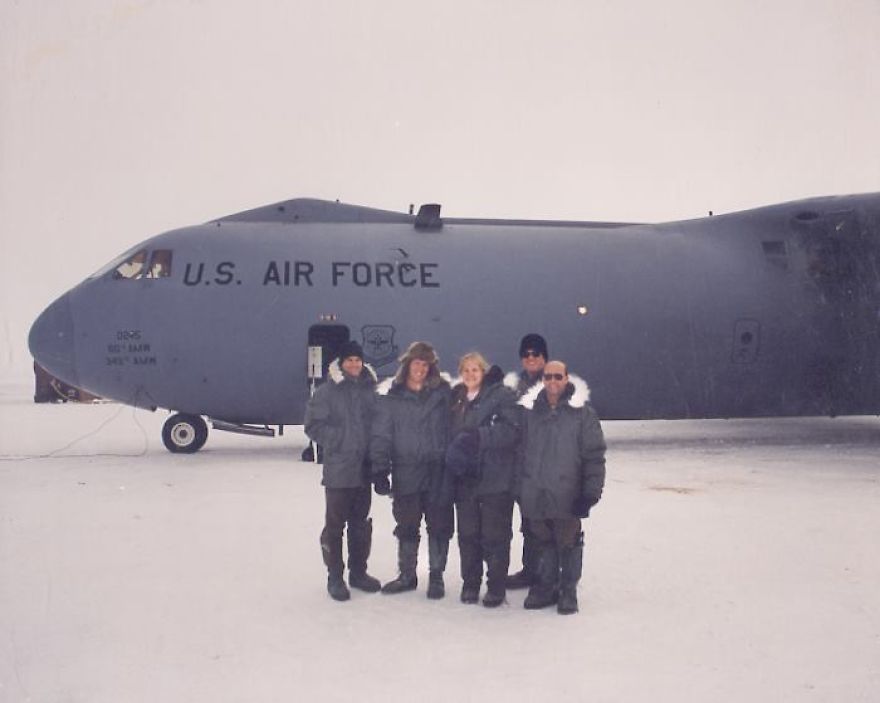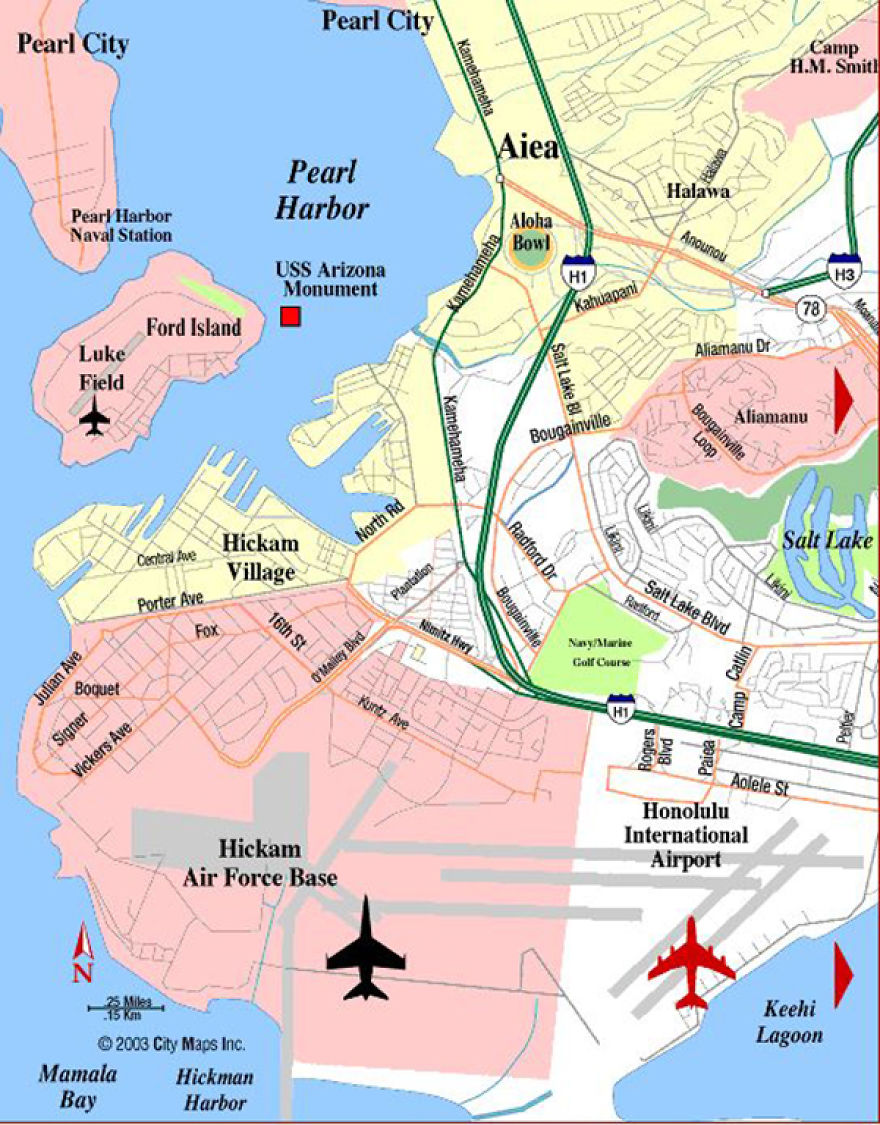The military, throughout the ages, has documented their endeavors with art – paintings, sculptures, tapestries – wherever a visual story can be displayed. This is a long and rich tradition in all cultures to pass the stories down to future generations. Before war correspondents and cameras, artists were tasked with illustrating the tales.
Documentation of the military covers their work in peace time along with war, which makes for a broad range of stories to tell. The United States Air Force continues this tradition and the paintings are created by members of the Society of Illustrators of New York, Los Angeles and San Francisco, the Midwest Air Force Artists, the Southwest Society of Air Force Artists and some independent illustrators. The work is juried by the members of those different societies. Working this way guarantees that the quality of the work will be high.
The paintings are donated to the Air Force and become part of the National Archives. In exchange for the paintings, the Air Force sponsors trips for these “Air Force Artists” to travel to various locations around the globe and observe for themselves the amazing range of work they do.
To be clear, the artists do not create paintings of airplanes. Their goal is to showcase the people and the things they were doing like helping in drought ridden Somalia, transporting scientists and gear to Antarctica, running emergency flights helping to get people out of South East Asia after the tsunami hit and so much more.
I became an Air Force Artist shortly after I was accepted into the Society of Illustrators in 1990, and soon embarked on some of the most memorable, exciting and unusual trips imaginable. Trips could last sometimes just a day, or, you could be gone for nearly a month. We could pick and choose what would fit our schedule when the Air Force put various trips together and made the offers to us.
I traveled with crews to several bases in the United States and overseas to Hawaii, Guam, Palau, Pago Pago, Tokyo, New Zealand, and McMurdo Base in Antarctica.
I visited Vandenberg AFB several times, on the coast just north of Santa Barbara, and was privileged to watch Atlas and Titan missile launches right next to the beautiful Pacific Ocean. The night launches were stunning with a spectacular light show when the rocket was lit. All of the gantries, equipment, people, and massive spotlights surrounding the rocket along with the deep echoing sounds from the PA systems during the countdown made the scene so surreal and futuristic.
I visited another somewhat different missile base, FE Warren AFB in Cheyenne, Wyoming and was allowed to travel 90 feet under what looked like an innocuous farm house in a lonely field to see the heavily armored and guarded chamber where two officers would sit, waiting for an order from the Commander in Chief to launch the missles.
These people also monitored the condition of the missiles to make sure they were in good working order. All were equipped with nuclear warheads waiting quietly in their dark underground silos to what would surely be the start of WWIII if they got the order to launch.
While at FE Warren I was very privileged to attend the morning staff meeting where the DEFCON (defense readiness condition) level for the entire country was determined by reviewing any reports of a possible enemy intrusion at any point on our borders. It was so serious, and truly spooky. I was pleased though, when, at the end of the meeting the country was at DEFCON 1. Phew!
In Hawaii, we would stay at Hickam AFB right next to Pearl Harbor. I was walking around the base one afternoon, waiting for our next flight to take off (we were heading to Guam). I saw a really strange pattern across the walls of one of the beautiful white stucco buildings.
I hunted around until I found an officer who explained to me that what I was seeing were strafe marks created by the Japanese fighter pilots who attacked Pearl Harbor, December 7th, 1941. The hair on the back of my neck stood up a bit. Standing right next to what in essence was living history had a profound effect on me.
In 1994, I joined the crew of the 22nd AirLift Squadron out of Travis AFB, located between San Francisco and Sacramento California. On Halloween I clambered about their Starlifter jet, a C-141B, and began an amazing journey towards our final destination of McMurdo Base in the Antarctic. On the way, we spent the first night in Hawaii, and in the morning, two officers from McChord AFB joined us who specialized in navigating the poles.
I was up on the flight deck getting myself ready for the trans Pacific flight. I had done this trip before, and would crawl up into this tiny bunk near the ceiling, right below the inflight fueling port. The bunk was as long as I was tall, and I could squirrel away in there out of the way and still be able to see everything. One of the McChord officers saw me up there and handed me a teddy bear.
“You look perfect to take the bear,” he said.
OK I thought, this is weird but these trips could get a bit bizarre sometimes. That was one of the reasons I liked them so much. I slid back into my little bunk, this time with a teddy bear to keep me company on the long flight – about 12 hours from Hawaii to Christchurch, New Zealand. We did stop along the way in Pago Pago to get more fuel and some lunch.
Christchurch had the facilities to support military flights, and quite a few would travel through there each year, using it as a base for flying back and forth from McMurdo. It would be our home for the next three weeks, while the 22nd flew missions down to “the ice” and back.
In all, I did three trips with them to McMurdo (from Christchurch), and our enormous cargo jet would land right on the frozen Ross Sea. We glided into the landing area, cruising past an enormous blue volcano called Mt. Erebus that rises above McMurdo Station.
I simply stared in amazement as we cruised right past the caldera with a large plume of steam blowing out into the frigid air. Mt. Erebus is indeed active, and erupts off and on with lava flows, lava bombs and forms a large caldera with a lava lake but so far, not any huge, devastating explosions. It is blue because it has been covered in ice for millions of years.
The ice covering the Ross Sea had snow bulldozed off of it to make our landing strip. At that time it was at least 8 feet thick, but it was still a very nerve wracking experience knowing that below that sheet of ice, it was a 1500 foot drop to the seafloor and we were weighing in at about 350,000 pounds. I remember sucking in my breath and holding it when I felt the wheels touch the ice as if that would magically make us lighter.
When I exited the plane and stepped down onto the ice, it was an amazing thrill. Antarctica is brutally beautiful and looks like we had landed on another planet. I looked down at the ice and nearly panicked when I saw lots of cracks shot all through it, and, some were leaking water. The ground crew assured me over and over, it was OK, but, it was still a bit spooky.
Usually when I was on these trips, I would be the only civilian, however there was one other travelling with us. James Cameron, the director of Titanic was on board, and was as keen to see Antarctica as I was.
So yes, that teddy bear. It had a story, and a fun one at that. The bear belonged to a young girl in the midwest and she had given it to a commercial flight leaving from the airport in her city. The bear was wearing a small backpack and inside was a little book and instructions to write in there where the person holding the bear took it. On a certain date she asked if the bear could be sent back to her so she could plot on a map all of the places he had been for a school project.
I carried the little bear down to McMurdo Base. James was heading further inland to spend a couple of days at Amundsen/Scott Base which was situated at the true south pole. He carried it down there and took pictures of the fuzzy little guy sitting on the daffy red and white striped pole they had there.
After he brought it back to New Zealand, we handed it off to another crew who took it with them to Thailand. I don’t know if the bear made it back to her, but I had recorded her name and address and sent her a bunch of photos from our trip. I do hope she got the bear back.
Traveling the world with Air Force crews and then creating some of the most challenging but seriously satisfying paintings for the National Archives has been such an enjoyable part of my life as an artist. I admire the people in the military and had an amazing time with all of them.
I barely touched on the adventures that happened during each trip, however I do hope that you grasped the sense of adventure I felt while jetting off into the wild blue yonder.

 Dark Mode
Dark Mode 

 No fees, cancel anytime
No fees, cancel anytime 












































2
0